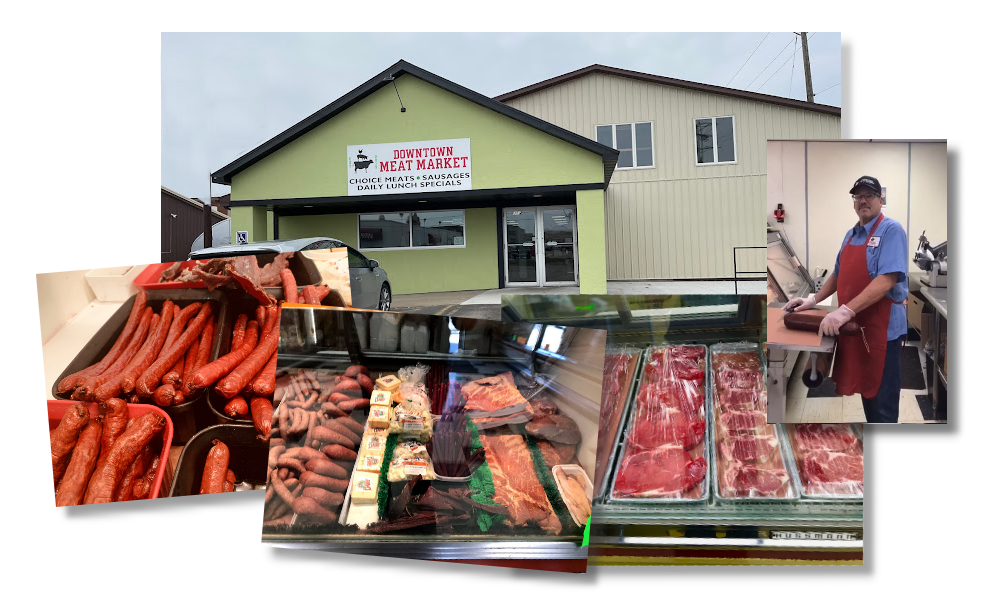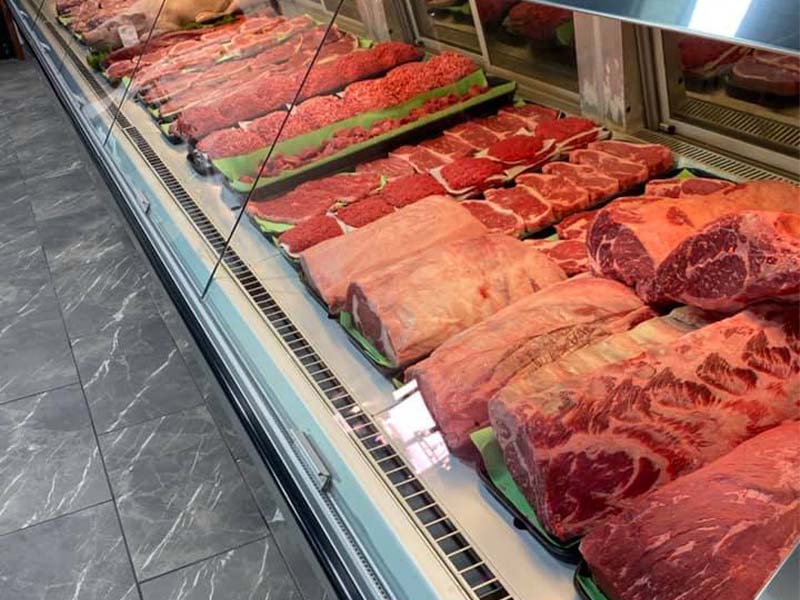Obtain the very best Deals on Fresh Meat at Bagley Farms Meat Market Edwardsville IL
Obtain the very best Deals on Fresh Meat at Bagley Farms Meat Market Edwardsville IL
Blog Article
Discover the Art of the Butcher's Cut in a Modern Meat Market
In the ever-evolving landscape of modern meat markets, the butcher's cut has transcended its typical roots, merging old-time craftsmanship with contemporary methods. bagley farms meat market edwardsville il. Today's butchers are not simply cpus of meat; they are well-informed artisans who highlight sustainability and moral sourcing. Their proficiency in choose and preparing cuts customized to specific culinary needs offers an unequaled dining experience. Yet, what absolutely sets the contemporary butcher apart is their capacity to create a much deeper link between consumers and the origins of their meat. How do these masters balance tradition with development, and what ramifications does this have for the future of meat intake?
Development of Butchery Methods

The mid-20th century saw butchery strategies better improved by scientific insights right into muscle biology and meat aging, boosting both tenderness and preference. Developments like vacuum packaging and refrigeration expanded product shelf-life, allowing butchers to diversify offerings and improve quality assurance. This duration likewise noted the increase of specific tools, such as band saws and meat slicers, which boosted precision and efficiency in meat processing.
The 21st century has actually introduced digital technology into the butchery world. Computerized systems now help in monitoring animal provenance and optimizing cuts to satisfy specific customer preferences. In addition, a resurgence in artisanal butchery has arised, blending traditional skills with modern expertise to satisfy consumers looking for honest and lasting meat choices. This advancement highlights a vibrant interplay between practice and advancement, conference contemporary needs while preserving the craft's heritage.

Recognizing Meat Cuts

Recognizing the complexities of meat cuts is necessary for both butchers and consumers looking for top quality and worth. Each cut comes from a different component of the animal, passing on distinct flavors, appearances, and cooking methods. Proficiency of these distinctions not only boosts cooking experiences however also optimizes the utility of each carcass. For butchers, precise cuts mirror skill and regard for the craft, making certain very little waste and ideal yield.
The primary groups of meat cuts include primitive, sub-primal, and retail cuts. Primal cuts, such as the loin, rib, and chuck, are the big areas originally divided from the carcass. Butchers then break these down better into sub-primal cuts, prior to finally generating retail cuts offered to customers, like ribeye his explanation or tenderloin. Each stage needs careful interest to physiological structure and muscle mass composition.
Comprehending muscular tissue composition is vital; muscles utilized a lot more regularly by the pet often tend to be harder and are best matched for slow cooking techniques, while less-used muscular tissues, like those found in the loin, are much more tender and ideal for barbecuing or roasting. Knowledge with these differences encourages consumers to make informed options, improving their cooking review undertakings.
Choosing Quality Meat
Picking the ideal meat includes more than just choosing a visually enticing piece from the display. The art of choosing high quality meat calls for a critical eye and knowledge of specific features that symbolize freshness and quality.
Secondly, take into consideration the marbling, which refers to the white flecks of fat within the muscle mass. Proper marbling is a crucial indicator of inflammation and flavor, as it thaws during food preparation, enhancing the meat's juiciness. Bear in mind, higher marbling often associates with premium top quality cuts, such as USDA Prime.
Texture is an additional crucial variable; meat ought to really feel firm to the touch, not slimy or extremely soft. Additionally, be mindful of the aroma. Fresh meat should have a tidy, neutral scent, complimentary from any kind of sour or off-putting odors.
Coupling Cuts With Cooking Techniques
Effectively coupling cuts of meat with the suitable cooking techniques is necessary for attaining optimum flavor and appearance. These approaches boost the meat's natural tastes and make sure a juicy coating.
Conversely, tougher cuts like brisket and chuck roast are rich in collagen, which damages down into gelatin when cooked gradually. These cuts are perfect for braising or slow roasting, enabling the meat to soften over time and create deep, intricate tastes. Likewise, cuts such as short ribs and pork shoulder get on well with slow-cooking methods, where expanded cooking times change their durable structures into succulent recipes.
Lamb shanks and oxtail, which require long term food preparation to tenderize, are perfect prospects for stewing or sluggish simmering. These methods coax out abundant, hearty flavors while keeping wetness. By understanding the unique features of each cut, cooks and home cooks alike can boost their culinary creations, making certain each meal is both satisfying and remarkable.
The Butcher's Function Today
Navigating the advancing landscape of the contemporary meat market, the butcher's role today expands beyond plain preparation of cuts. Contemporary butchers are cooking artisans, instructors, and advocates for lasting methods. They bridge the space between the farm and the fork by ensuring honest sourcing, understanding animal husbandry, and focusing on transparency in the supply chain. This change reflects the growing customer demand for top quality over quantity, where provenance and animal well-being are critical.
In enhancement to crafting precise cuts, butchers now involve straight with customers, using cooking advice and tailoring choices to match individual needs and choices. Their experience in meat aging, marbling, and flavor profiles equips customers to make informed decisions, improving their cooking experiences. This personalized service exemplifies the butcher's progressing function as a relied on expert in the kitchen.
Furthermore, butchers are essential in decreasing waste, utilizing whole pets to create diverse products such as sausages and stocks - bagley farms meat market edwardsville il. This extensive technique not just appreciates the pet yet additionally straightens with contemporary sustainability objectives. why not find out more In this way, the modern-day butcher personifies both practice and innovation, adjusting to an ever-changing market while preserving the virtuosity and honesty of their craft

Verdict
Mastery in understanding varied meat cuts and top quality signs equips butchers to give enlightened suggestions, aligning specific cuts with optimum food preparation approaches. By recognizing historic techniques while accepting modern demands, the butcher's duty remains crucial in today's innovative meat market.
Report this page